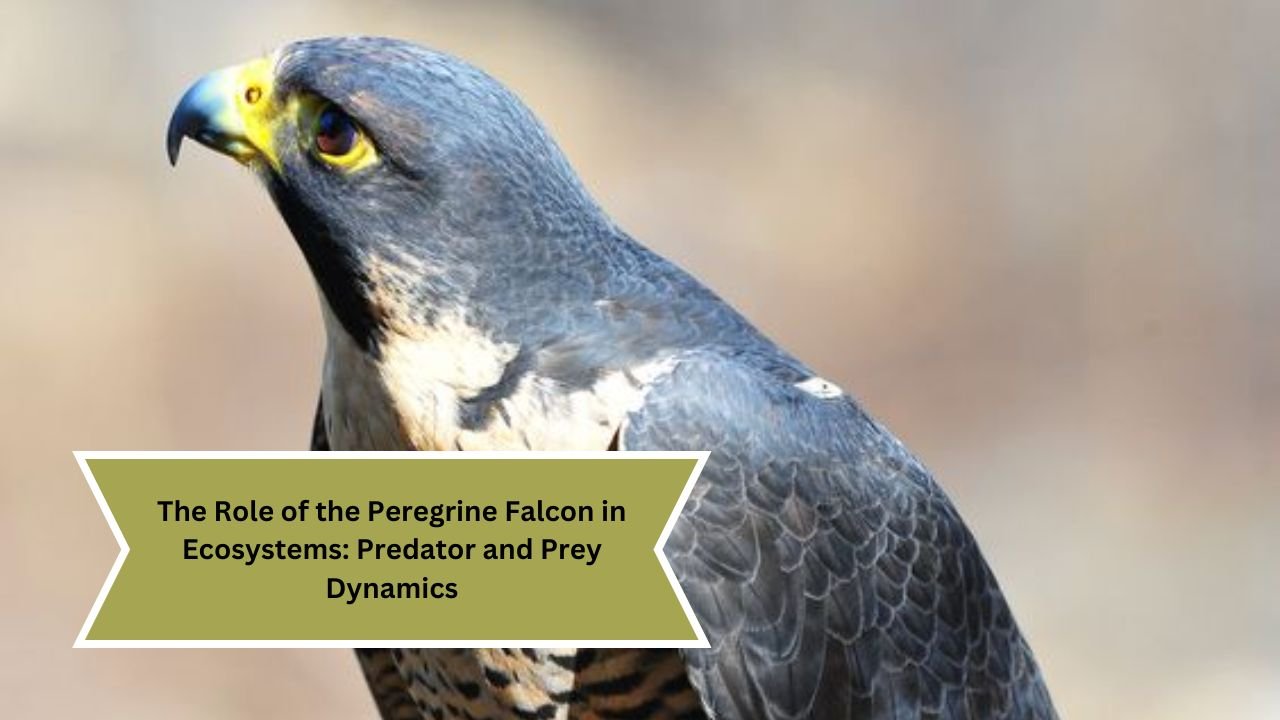The peregrine falcon (Falco peregrinus), renowned for its incredible speed and striking appearance, plays a crucial role in various ecosystems around the globe. As one of the fastest animals on the planet, it can reach speeds exceeding 240 miles per hour during its characteristic hunting stoop (high-speed dive). Understanding the dynamics between this formidable predator and its prey is essential to appreciating its ecological significance. This article explores the role of the peregrine falcon in ecosystems, examining its hunting strategies, prey selection, and the broader implications for biodiversity and ecosystem health.
1. The Peregrine Falcon: An Overview
1.1 Physical Characteristics
Peregrine falcons are medium-sized raptors characterized by their distinctive blue-grey plumage, barred white and brown underparts, and a black “helmet” on their heads. Adults typically weigh between 1.5 to 3.5 pounds, with females being larger than males. Their keen eyesight, powerful talons, and agile flight make them highly effective hunters.
1.2 Habitat and Distribution
Peregrine falcons are found on every continent except Antarctica, thriving in diverse habitats, including urban areas, coastal cliffs, grasslands, and forests. Their adaptability to various environments is a key factor in their widespread presence. Urban peregrines have even learned to nest on skyscrapers, using city structures as substitutes for their natural cliff nesting sites.
2. Hunting Strategies and Techniques
2.1 The Stooping Dive
One of the most fascinating aspects of the peregrine falcon’s hunting behavior is its stooping dive. During this high-speed pursuit, the falcon targets its prey from great heights, folding its wings to achieve remarkable speeds. This method allows the falcon to surprise its prey, often resulting in a successful capture.
2.2 Hunting Techniques
Peregrine falcons employ various hunting techniques depending on their environment and prey availability. They often hunt solitary or in pairs, using their exceptional eyesight to spot prey from high vantage points. Once a target is identified, they may engage in a series of aerial maneuvers, including rapid turns and dives, to close the distance quickly. This agility makes them formidable hunters, capable of taking down birds larger than themselves.
3. Prey Selection and Dynamics
3.1 Primary Prey Species
Peregrine falcons primarily feed on other birds, with their diet consisting of species such as pigeons, songbirds, shorebirds, and waterfowl. Their preference for avian prey is influenced by the falcon’s hunting strategies, as their speed and agility are well-suited for catching birds in flight. In urban environments, they often target abundant pigeon populations, while in coastal areas, they may hunt seabirds like gulls.
3.2 Role in Prey Populations
As top predators, peregrine falcons play a vital role in regulating prey populations. Their presence helps maintain balance within ecosystems by controlling the numbers of various bird species. This predatory pressure can influence prey behavior and distribution, promoting biodiversity and healthier populations. For instance, areas where peregrine falcons thrive may see shifts in the abundance and types of birds, as certain species become more vulnerable to predation.
4. Ecological Impact of Peregrine Falcons
4.1 Biodiversity and Ecosystem Health
The role of the peregrine falcon extends beyond simply hunting; they are indicators of ecosystem health. As apex predators, their populations reflect the overall condition of their habitats. A healthy peregrine population suggests a balanced ecosystem with sufficient prey and minimal environmental stressors. Conversely, declines in peregrine numbers may signal underlying ecological issues, such as habitat destruction, pollution, or climate change.
4.2 Interactions with Other Species
Peregrine falcons also interact with other predators, influencing their behaviors and populations. For example, the presence of peregrines can displace smaller raptors, such as kestrels or accipiters, which may alter local predation dynamics. Furthermore, their competition with other predators, such as owls and larger hawks, shapes the community structure within their habitats.
5. Conservation and Human Impact
5.1 Historical Decline
In the mid-20th century, peregrine falcon populations faced significant declines due to pesticide use, particularly DDT, which affected their reproductive success. The chemical caused eggshell thinning, leading to reduced hatch rates. As a result, peregrines were listed as endangered in many regions.
5.2 Recovery Efforts
Conservation efforts in the latter part of the 20th century, including banning harmful pesticides, habitat protection, and successful breeding programs, have led to significant recovery in peregrine populations. Their reintroduction into various regions demonstrates the effectiveness of these measures. Today, the peregrine falcon is classified as a species of least concern, although ongoing monitoring is crucial to ensure their continued success.
5.3 Urban Adaptation
Interestingly, peregrine falcons have adapted remarkably well to urban environments. The availability of nesting sites on tall buildings and an abundant food source in city-dwelling birds have facilitated their success in metropolitan areas. This adaptability showcases the resilience of the species and highlights the importance of preserving urban habitats for biodiversity.
6. Conclusion
The peregrine falcon is a remarkable bird that exemplifies the intricate predator-prey dynamics within ecosystems. Its role as a top predator is essential for maintaining ecological balance, influencing prey populations, and promoting biodiversity. As we continue to study and protect these majestic birds, we gain insights into the health of our environments and the delicate relationships that define them.
Understanding the role of the peregrine falcon in ecosystems underscores the importance of conservation efforts. By preserving their habitats and fostering healthy ecosystems, we can ensure that these incredible birds continue to thrive, captivating future generations with their speed, grace, and ecological significance. The peregrine falcon serves as a powerful reminder of the interconnectedness of life and the critical role each species plays in maintaining the balance of nature.
| HOME | CLICK HERE |
| PEREGRINE | CLICK HERE |

